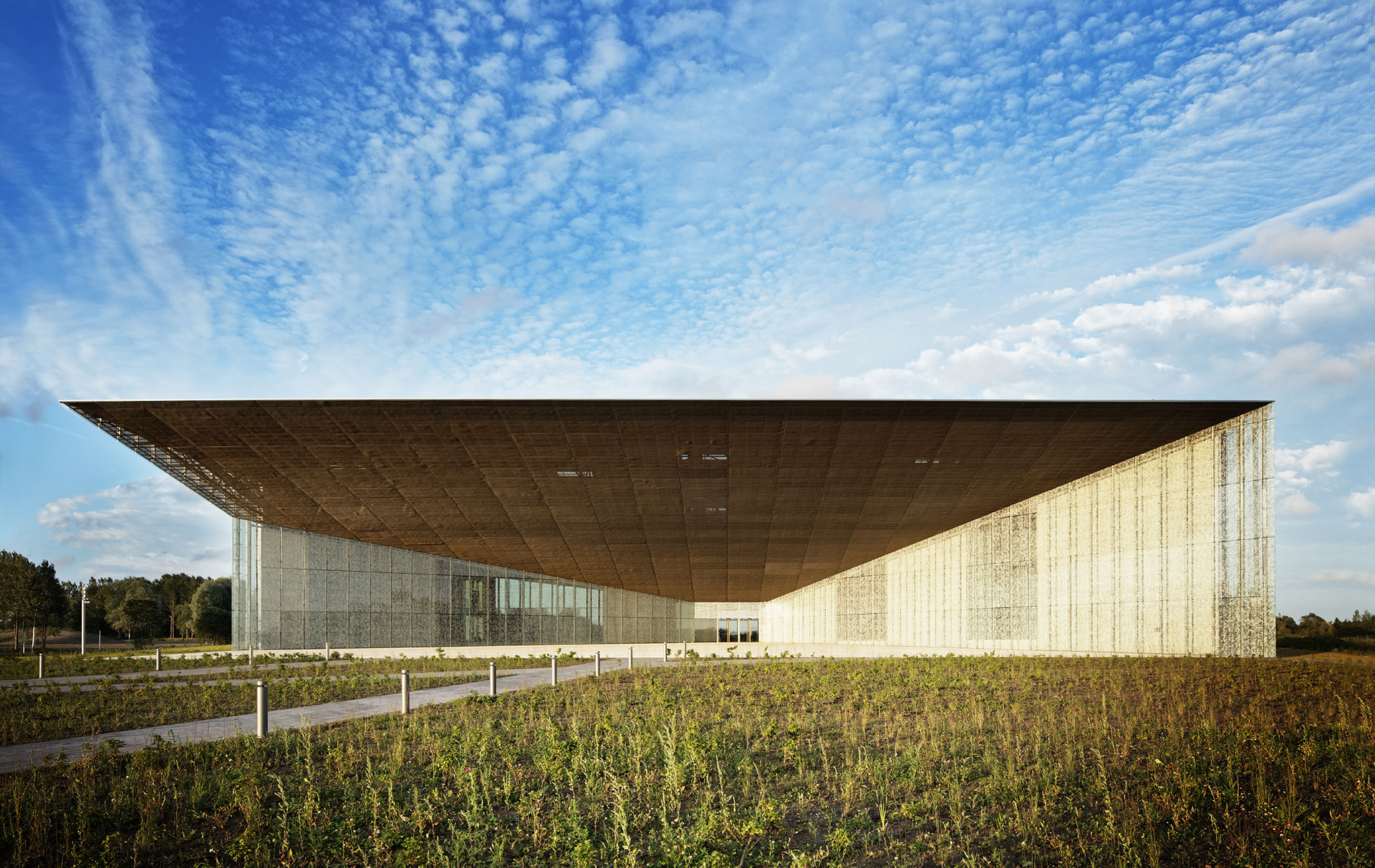The project developed by Lina Ghotmeh, Dan Dorell and Tsuyoshi Tane is arranged around an open space dedicated to the development of public activities such as exhibitions, performances or learning courses. The building functions as a meeting and interaction place where people gather to celebrate the rich, though sometimes painful, history of the country.
While at the back of the museum, the existing runway seems to continue over the building through the slight inclination of the roof, the glass façade that surrounds part of the perimeter of the building welcomes its visitors at the main entrance, at the same time that it seems to levitate the roof over the ground plane.

Estonian National Museum by Dorell.Ghotmeh.Tane. Photograph by Takuji-Shimmura.
Project description by Lina Ghotmeh, Dan Dorell and Tsuyoshi Tane
Estonia regained its independence from Soviet Unionon 20th August 1991 and joined the European Union in 2004.It has since embarked on a rapid program of social and economicreform. The creation of the new Estonian NationalMuseum, to be located in the city of Tartu, is testament tothe quest for reawakening a pride in national identity and aunique cultural history.
The international competition for the design and execution ofthe 34,000 sqm building, housing a collection of 140,000 objects,was launched in 2005. The proposal for this Museum challenged the competition brief. Instead of locating the building on the proposed site, the museum was anchored near a dismantledSoviet military base - a physically present ‘ruin’ of a painful history. The new Museum plays an essential role in the regeneration of the area, it deals with the history of this heavily charged and spatially unique place. With a sensitive intervention on this site, the building becomes a continuation of the airfield – its roof lifting and expanding towards an ‘infinite space’ - inviting the visitor to enter into the landscape and into the heart of the museum. The design creates an open house for public activities - exhibition, performance, learning - a place of gathering and interaction, bringing people together to celebrate a rich, if sometimes painful, history.





































































